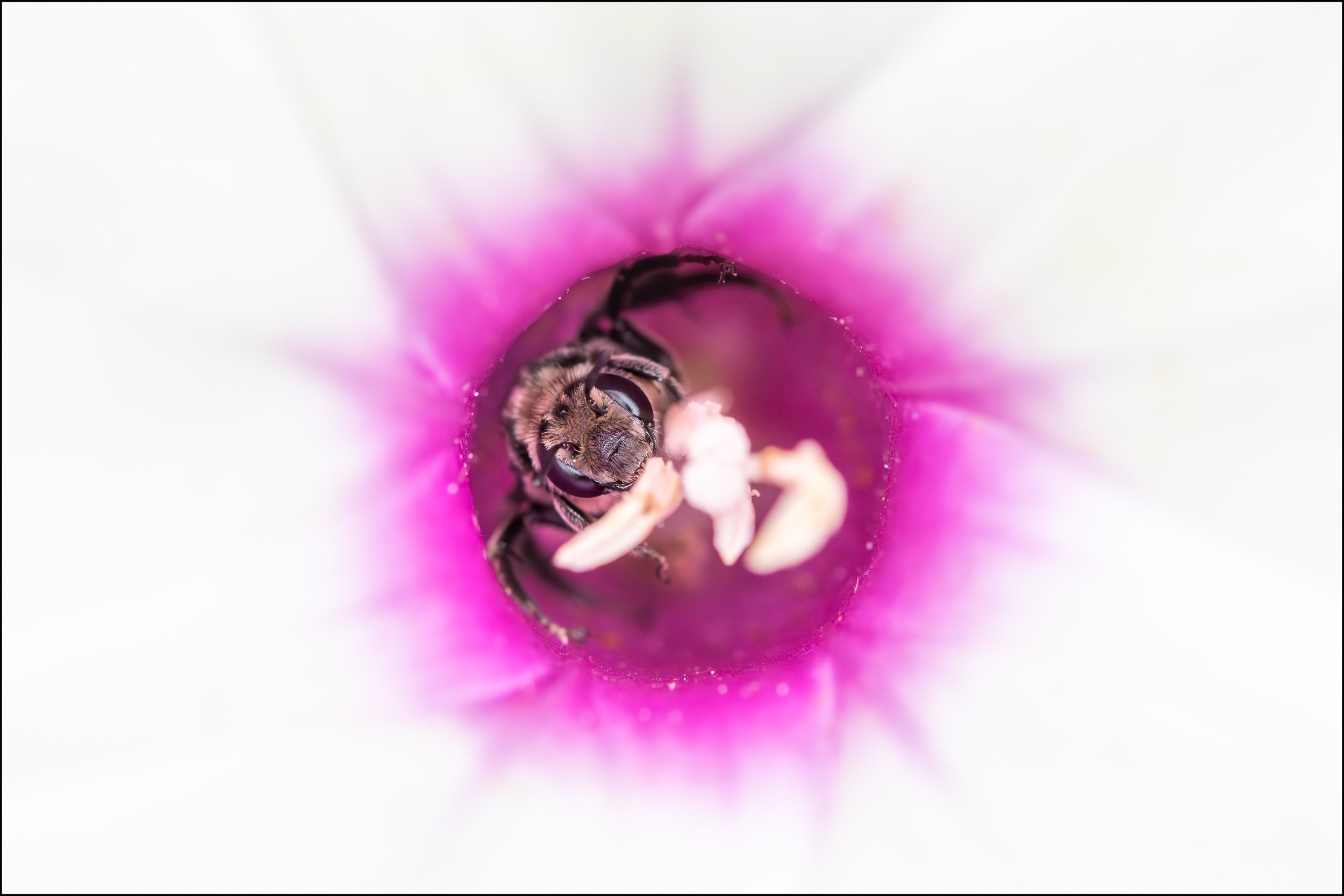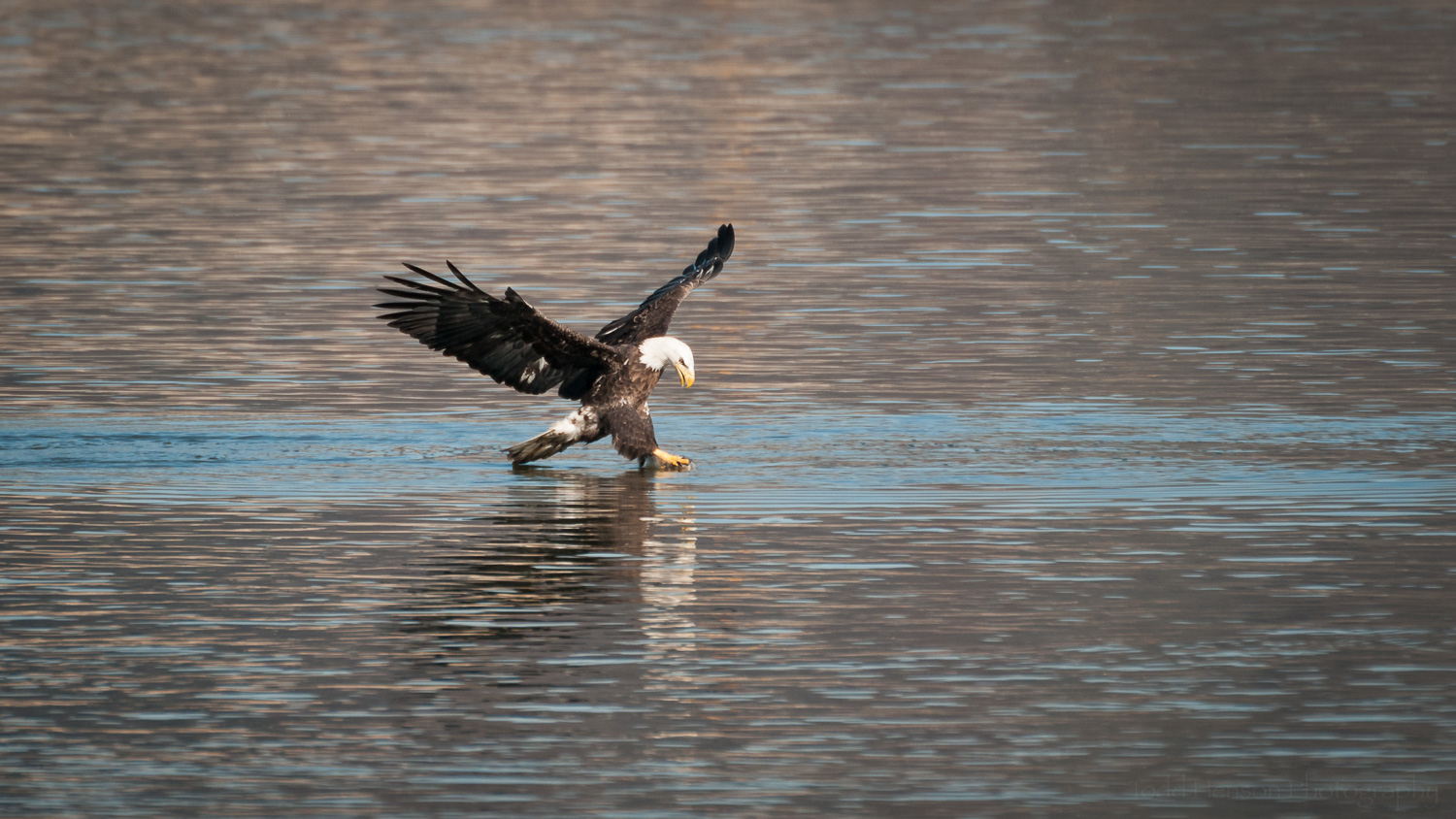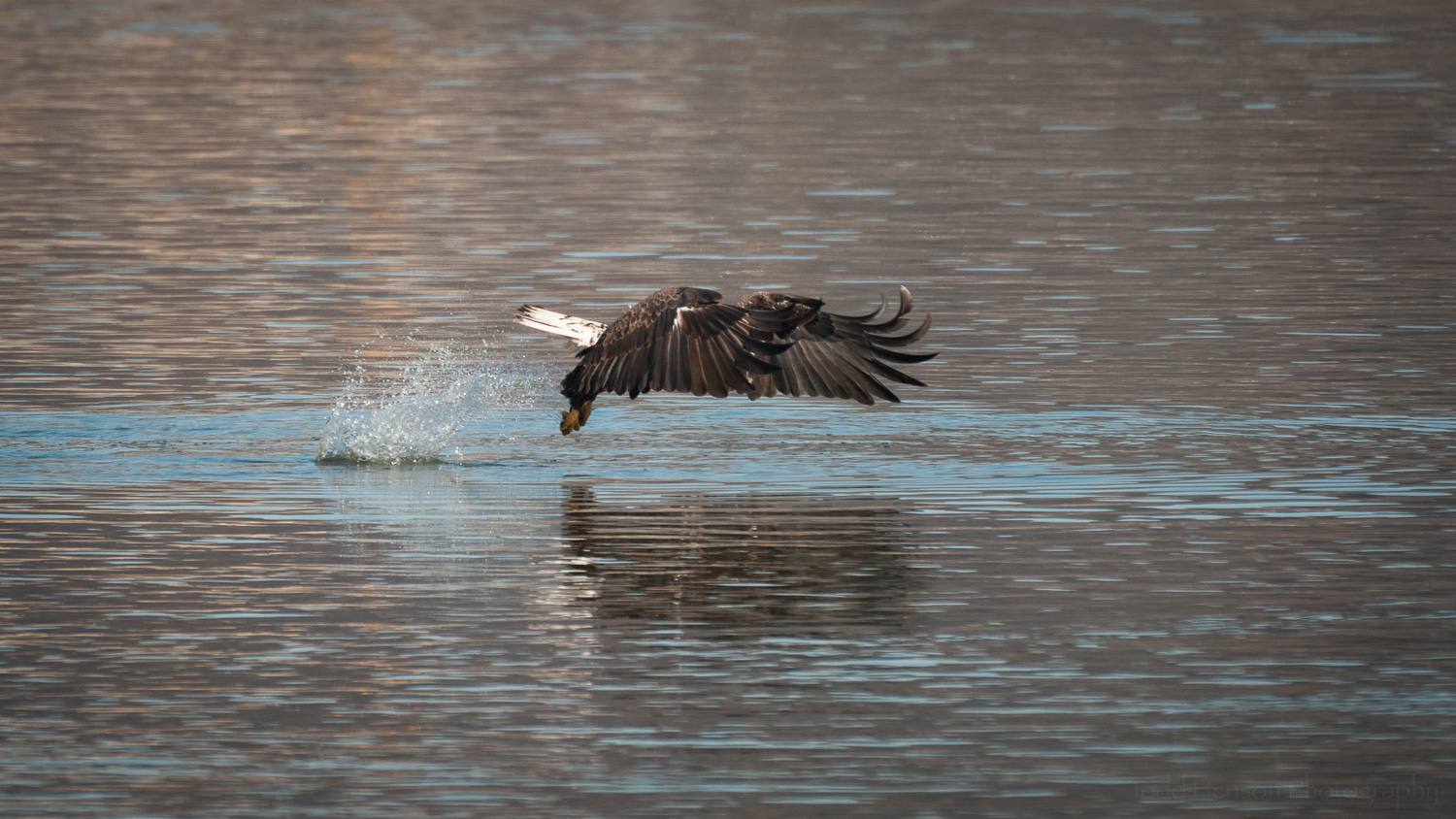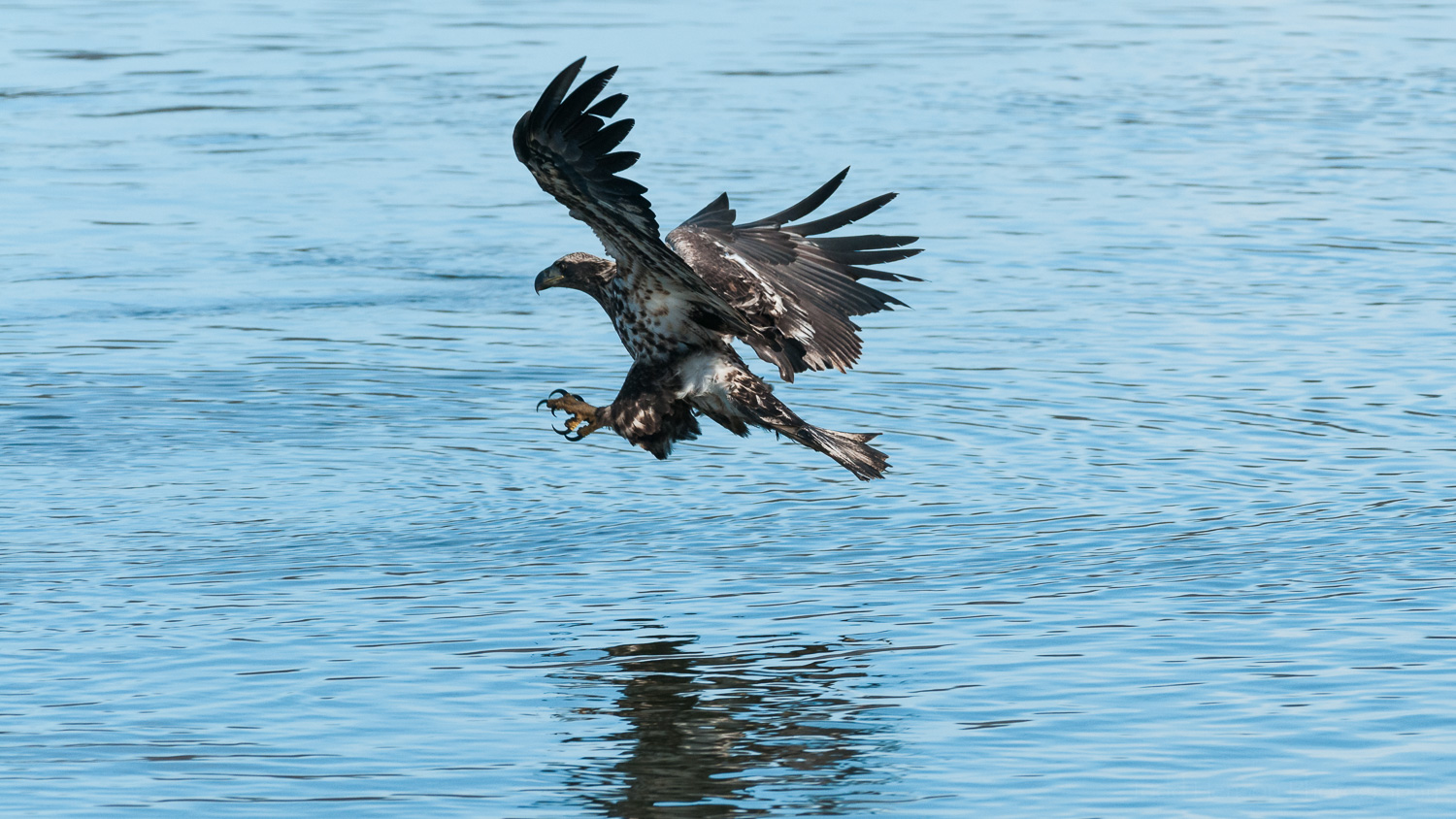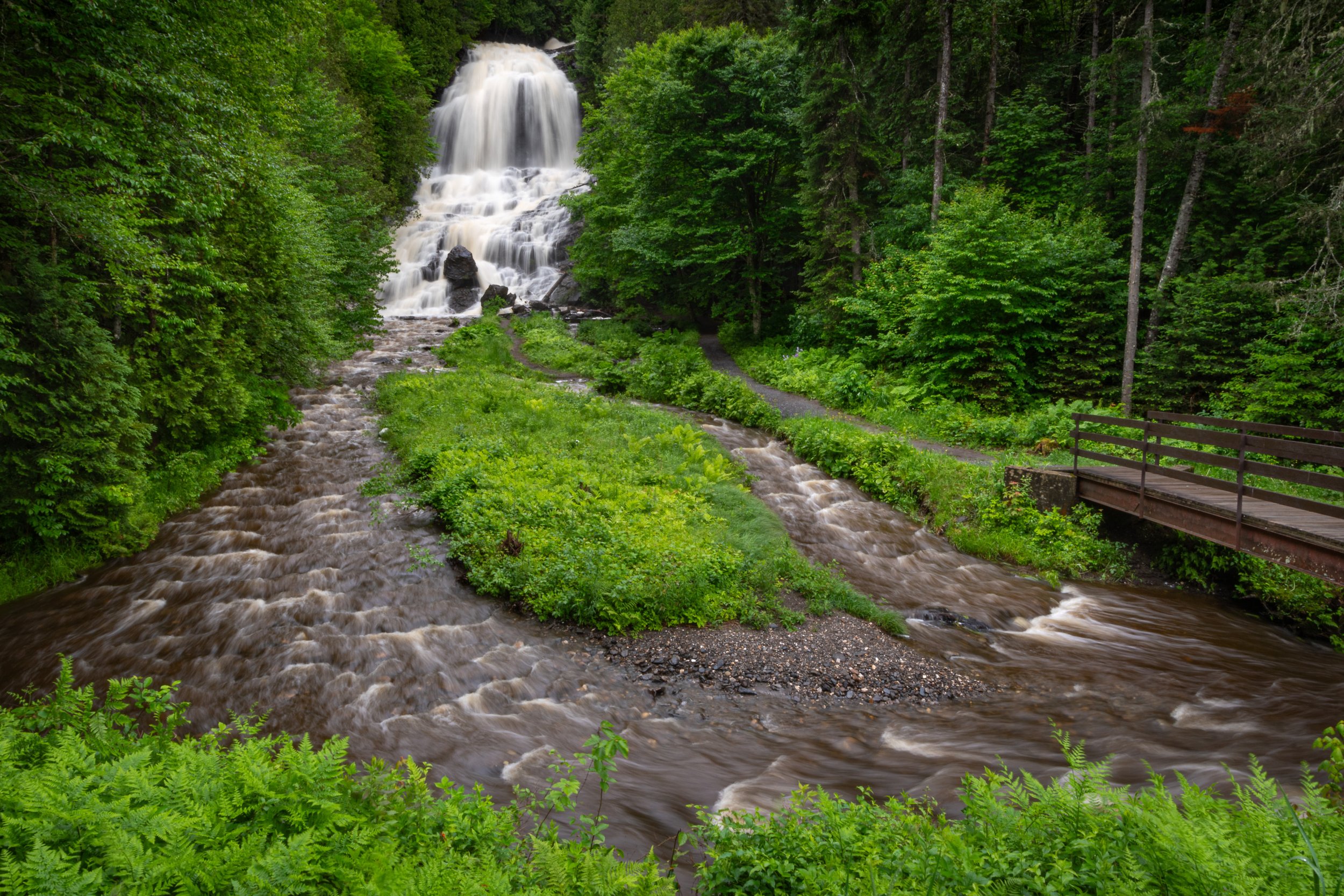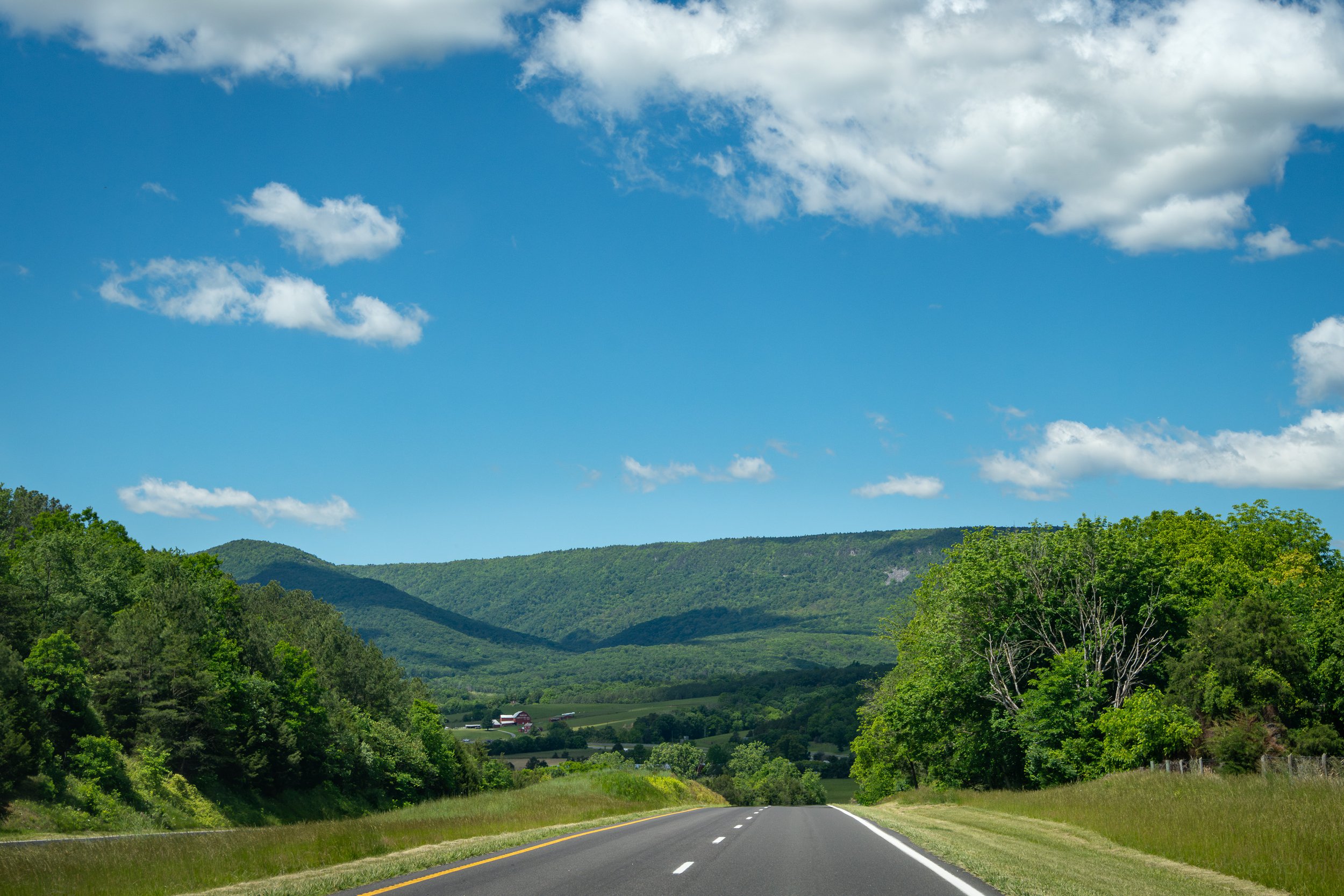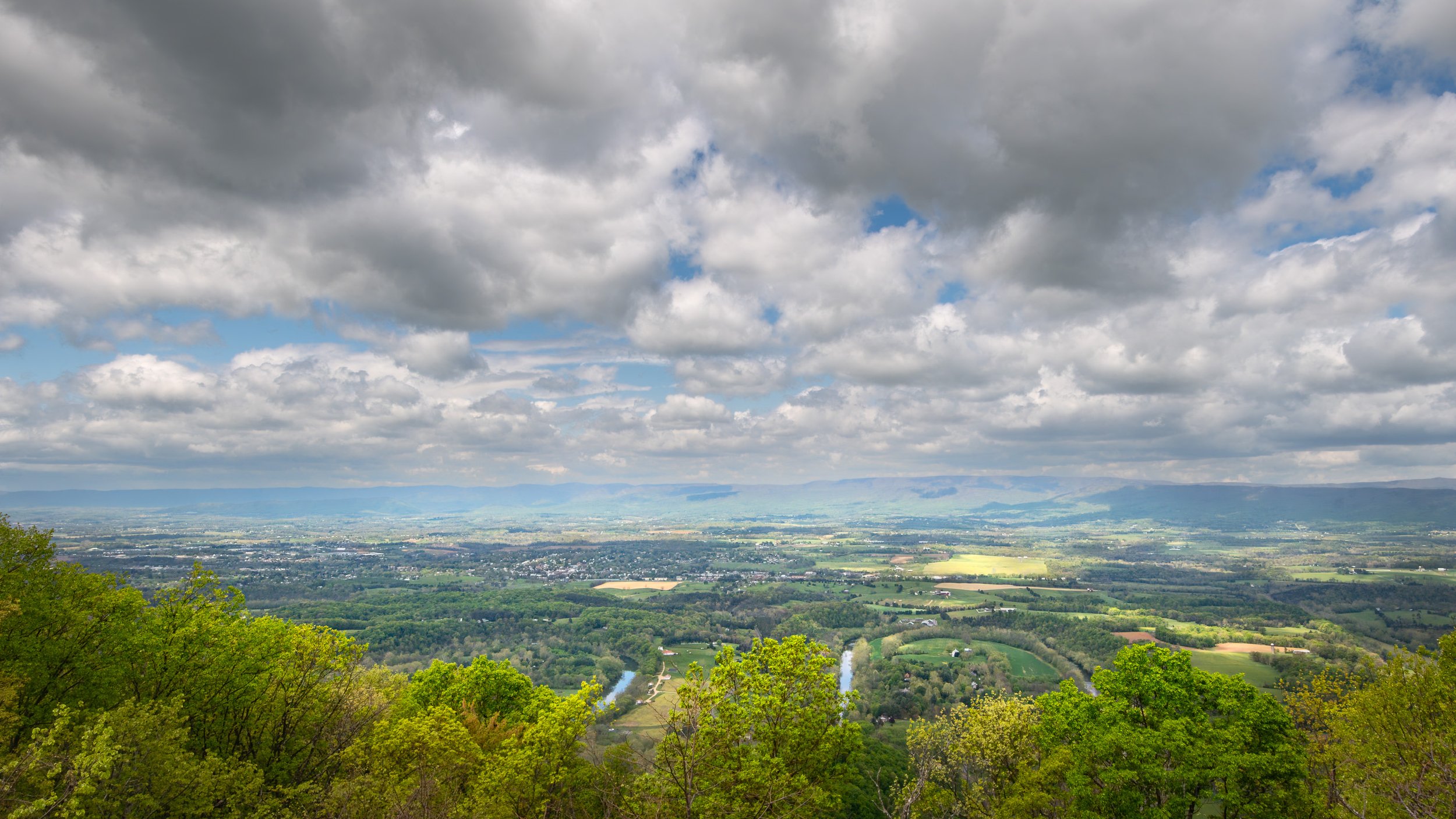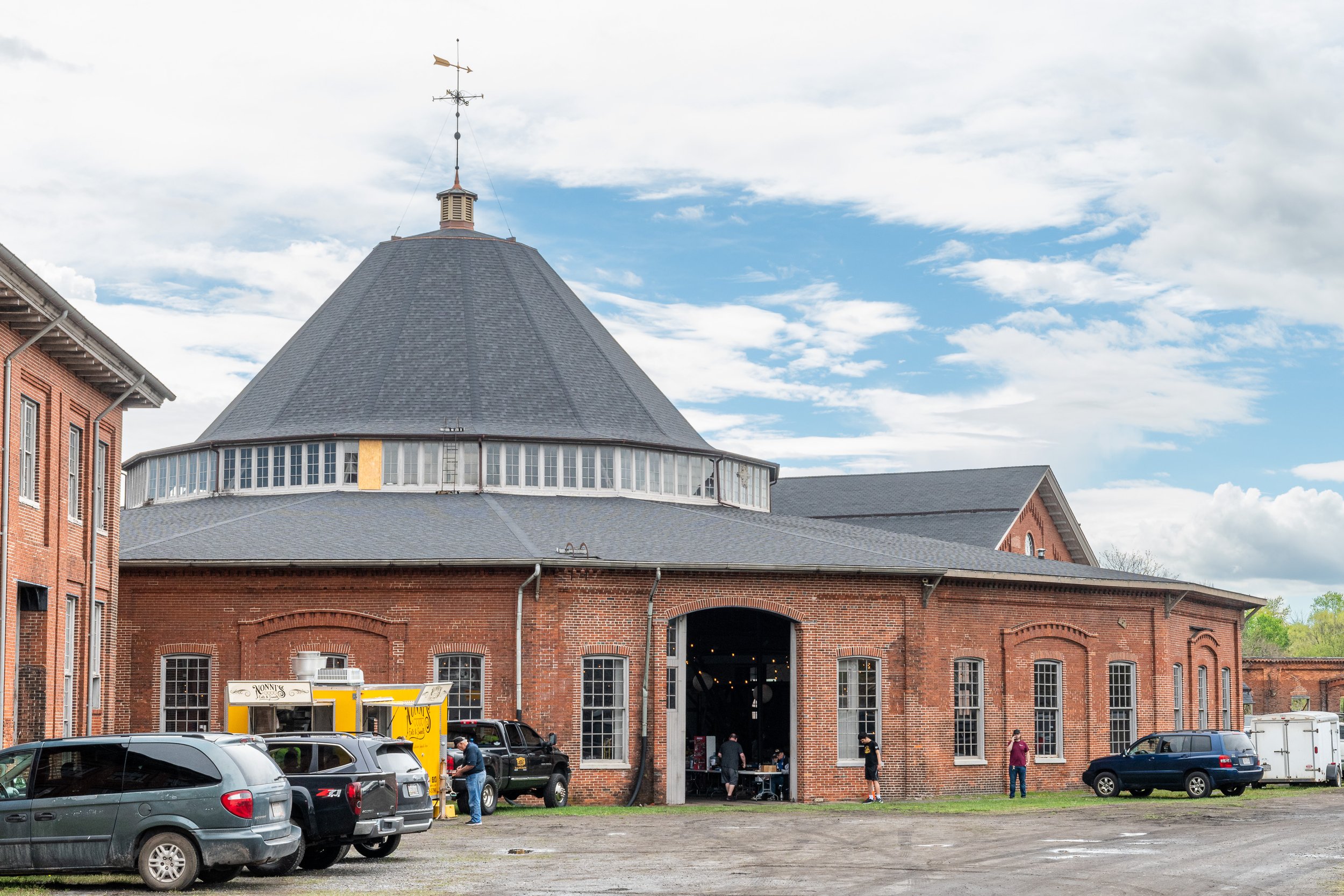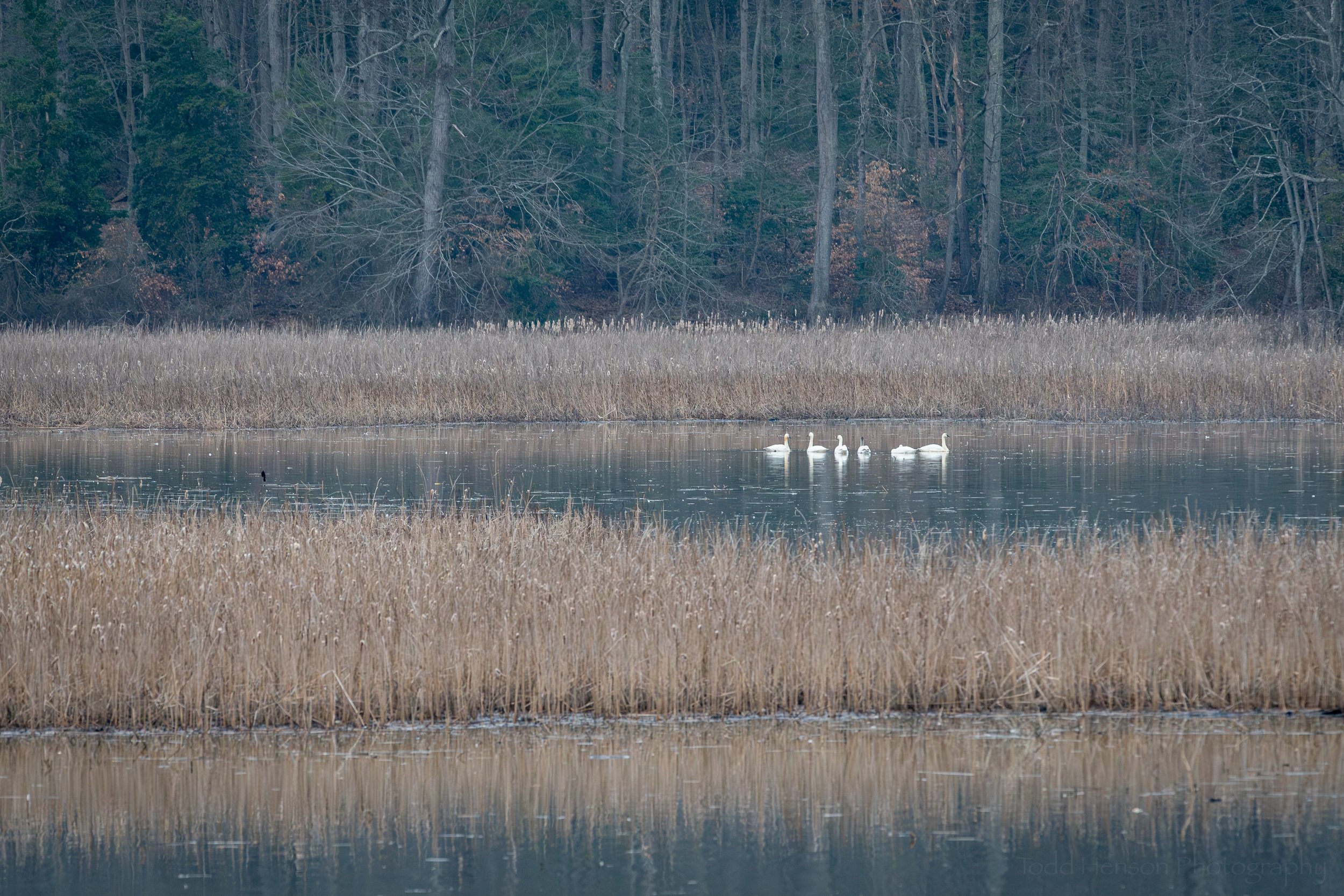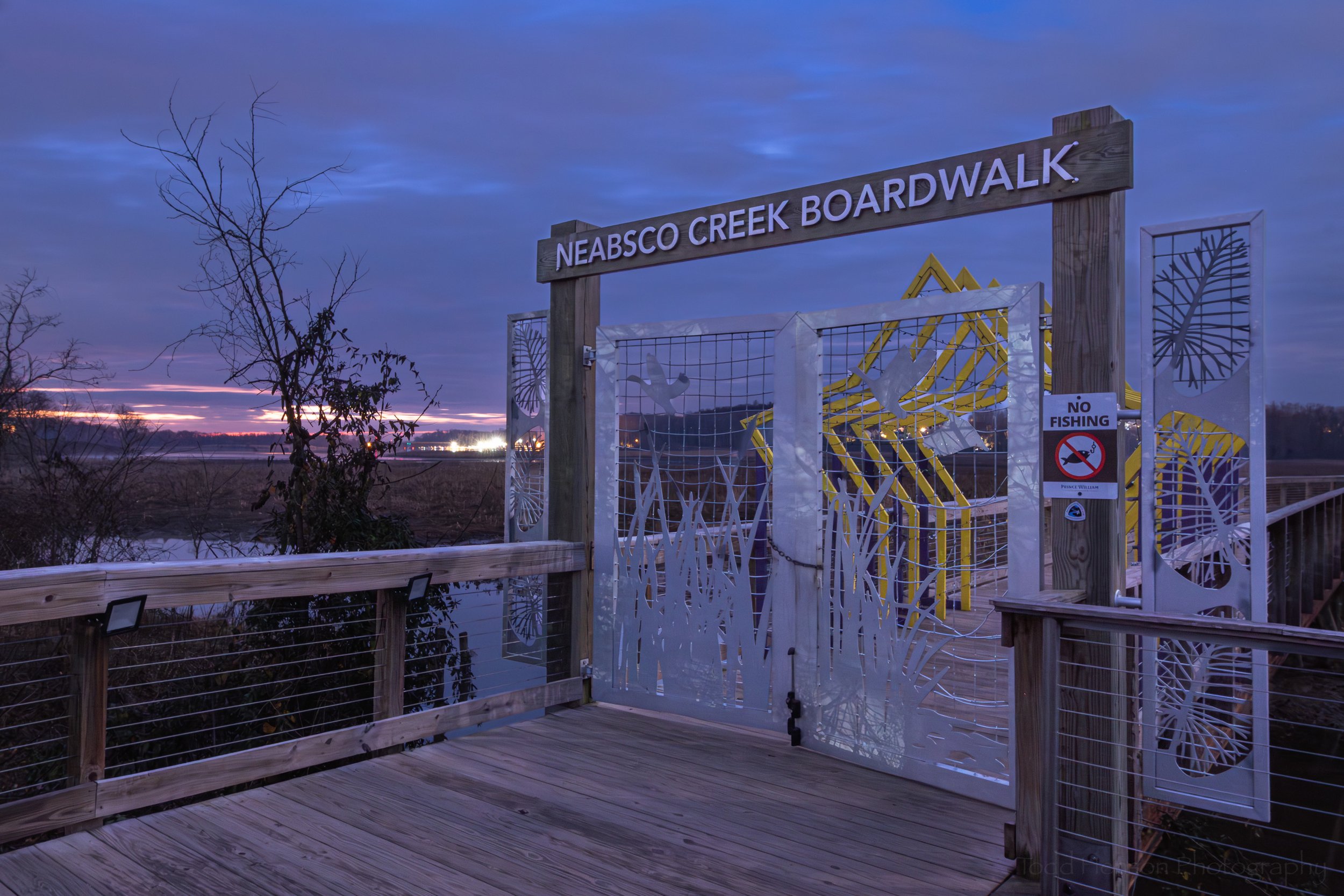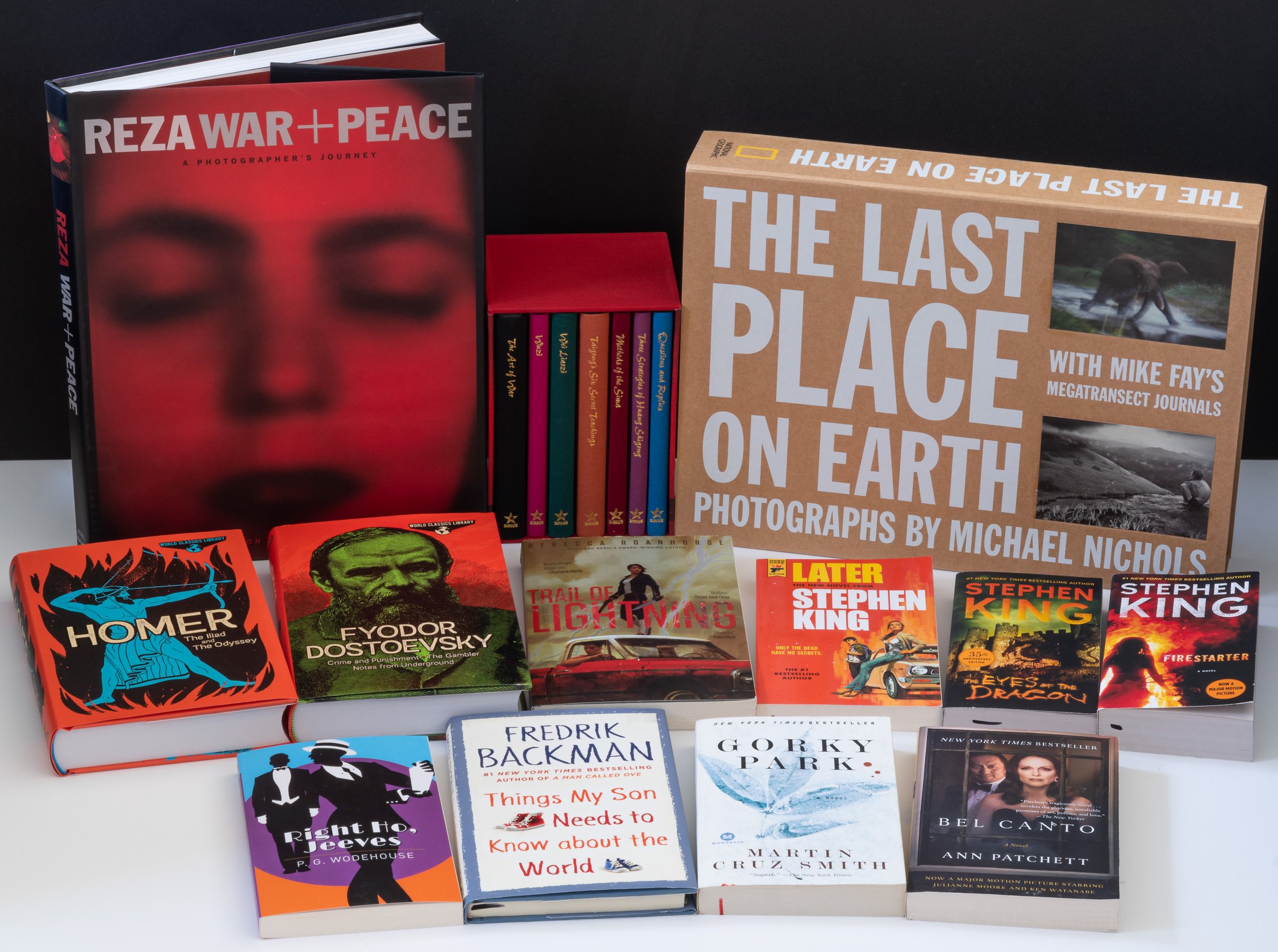Image of Lotus Flower with Bumble Bee against green background
Each year Kenilworth Aquatic Gardens grows ponds full of lotus plants. These plants bloom during the typically hot, humid summer. If you happen to be there on the right type of day, especially early in the morning when the sun is low and the light is soft, you can create some very nice images. When the lotus flowers are open and the sun backlights the flowers they glow a beautiful pink color.
This particular morning I had found a nice looking flower with a large green leaf behind it. The leaf almost perfectly framed the pink flower, providing a striking contrast between the green and red/pink. The sun was behind the lotus and the sky was cloudy giving off a soft light that provided the glow I was after. After lining up the flower with the leaf in the background I waited. Bumble bees were flying from flower to flower, and my goal was to capture a bumble bee in flight above the lotus. Depth of field was a challenge. I was shooting wide open with a 70-200mm f/2.8 lens and a 2x teleconverter giving me an aperture of f/5.6. This was to assure the background was just a soft out of focus area of green tones. There wasn’t a lot of light and I kept the ISO at 200 giving me a shutter speed of 1/250 second. I probably should have raised the ISO for a faster shutter speed to increase my odds of capturing a flying bumble bee in focus.
Strangely enough, the very first image I made was my favorite of that session. It captured a mostly in focus bumble bee with a nice orange batch of pollen, wings in motion, just over the core of the lotus flower and between two pink petals. I kept photographing, trying to improve on the first image, but none of the following images captured to me, what the first image had. Below is a selection of some of the other unprocessed images. In several cases I only captured part of the bee. In some it was more out of focus. In a couple the bee was above the flower with green background. I much preferred the bee against the soft pink/white background. It helped the bee pop out just as the pink of the flower against the green background helped the flower pop.
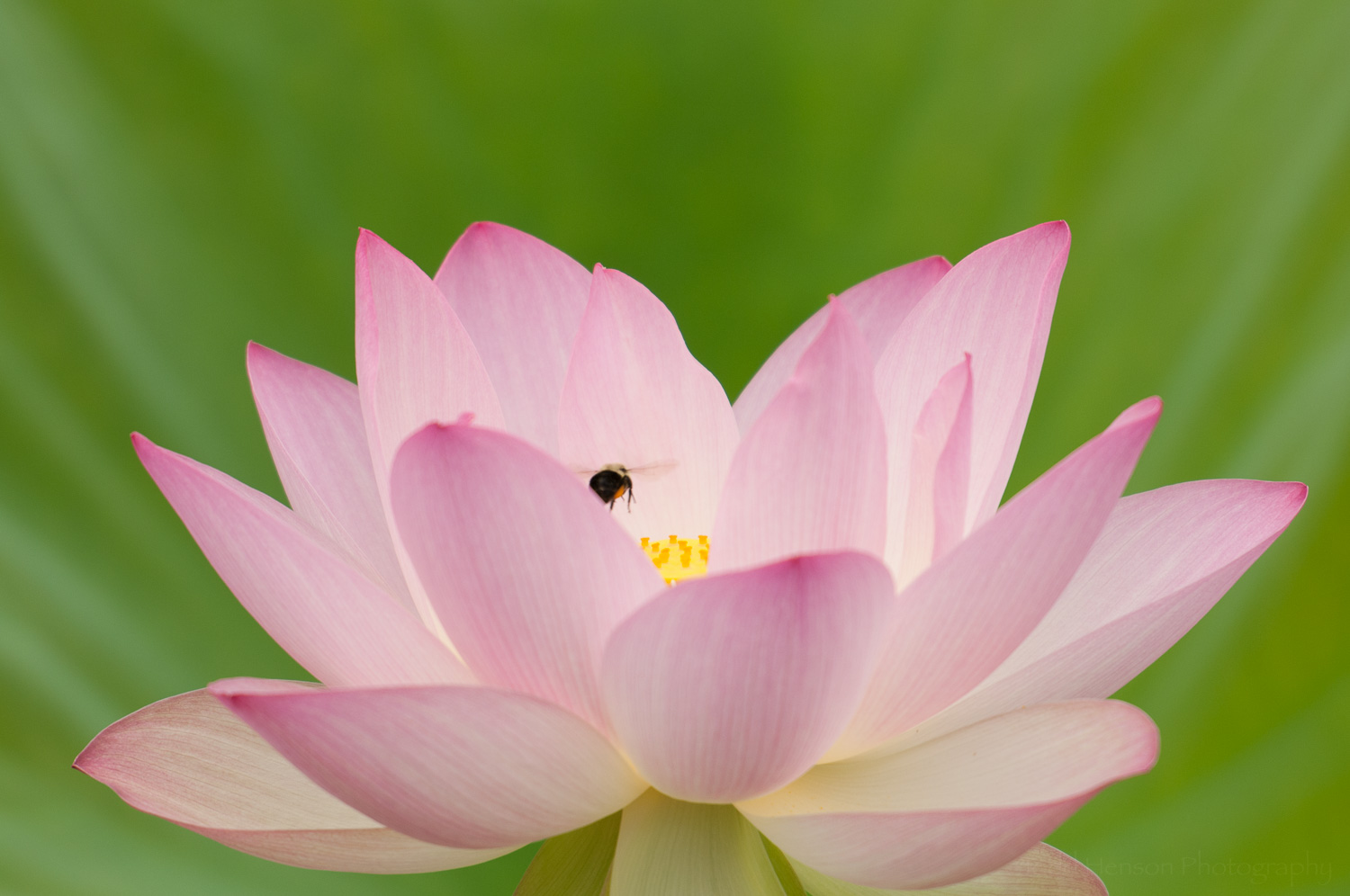


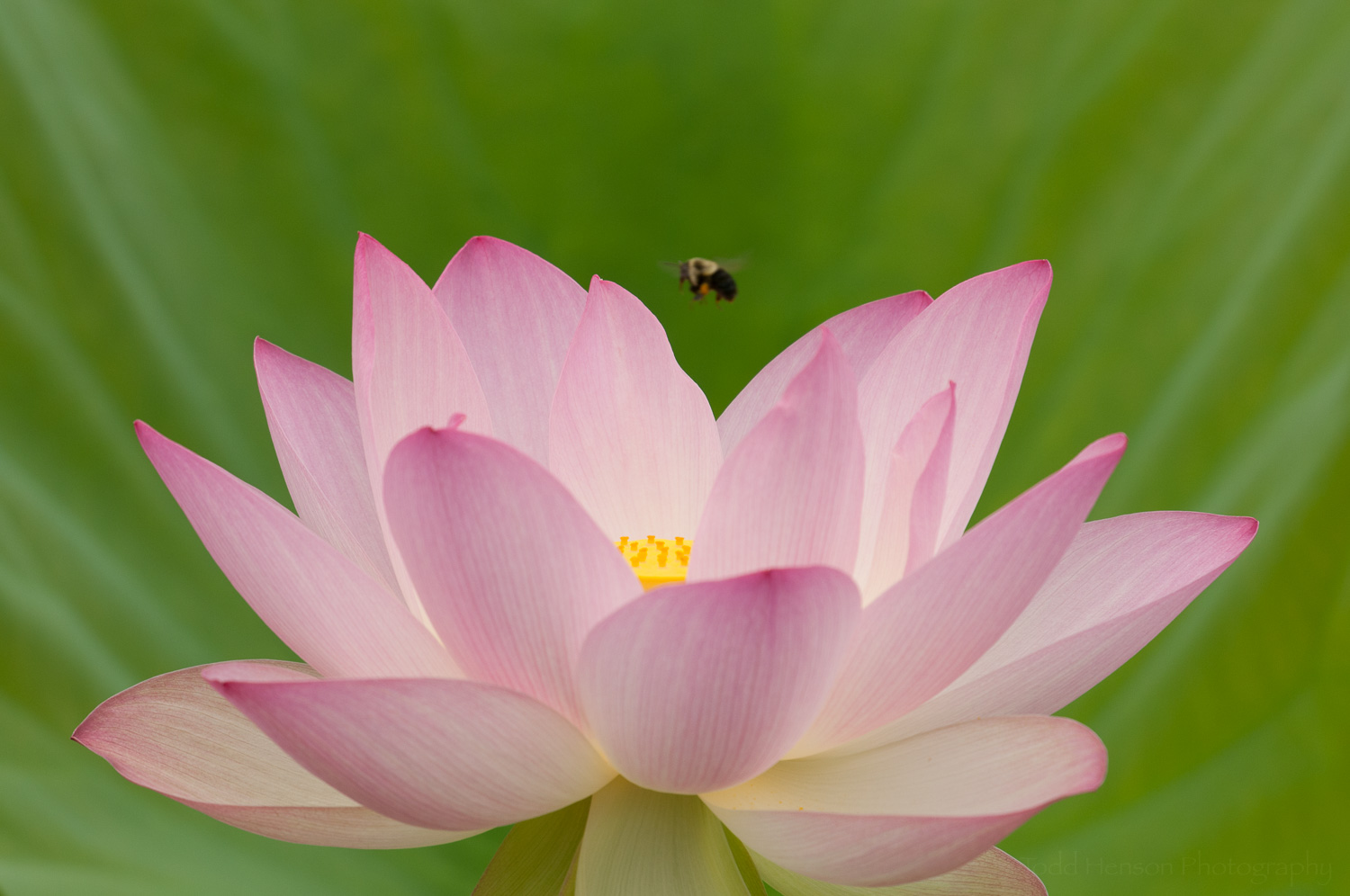
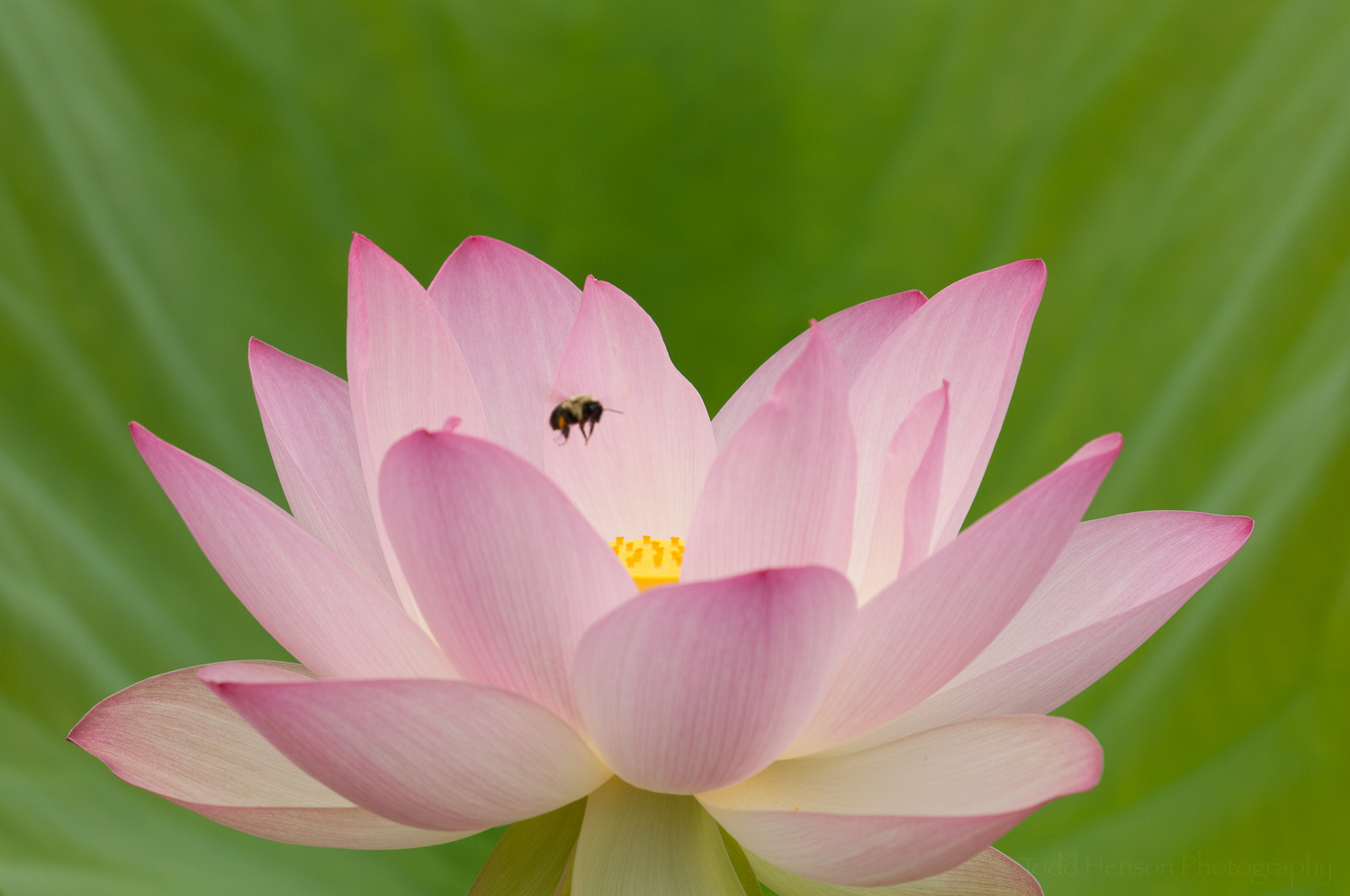
Sometimes you get lucky, as I did this time, and you capture your favorite image the first time. But more often than not the best image doesn’t come until later, after you’ve made a number of photos, perhaps tried different perspectives, changed angle, tried different focal lengths, apertures, shutter speeds. So even if you think you’ve captured a great image it almost always pays to keep photographing, keep experimenting, keep practicing. And always be aware of the light. Without the right light this image would not have worked.
To process the final image I darkened the background a bit, adding a vignette to help focus the eye on the glowing lotus flower. I increased the vibrance just a touch to accentuate the pinks and yellows, and added a slight tone curve to provide a bit more contrast. I felt this image was nice enough out of camera it didn’t require much processing. Below is the final image.
Final image of Lotus Flower and Bumble Bee
Do you enjoy these posts?
Sign up to receive periodic emails with updates and thoughts. Don’t worry, I won’t spam you. And please consider purchasing artwork or products from my online store, and using my affiliate links in the sidebar to the right when shopping online.
I appreciate your support!
